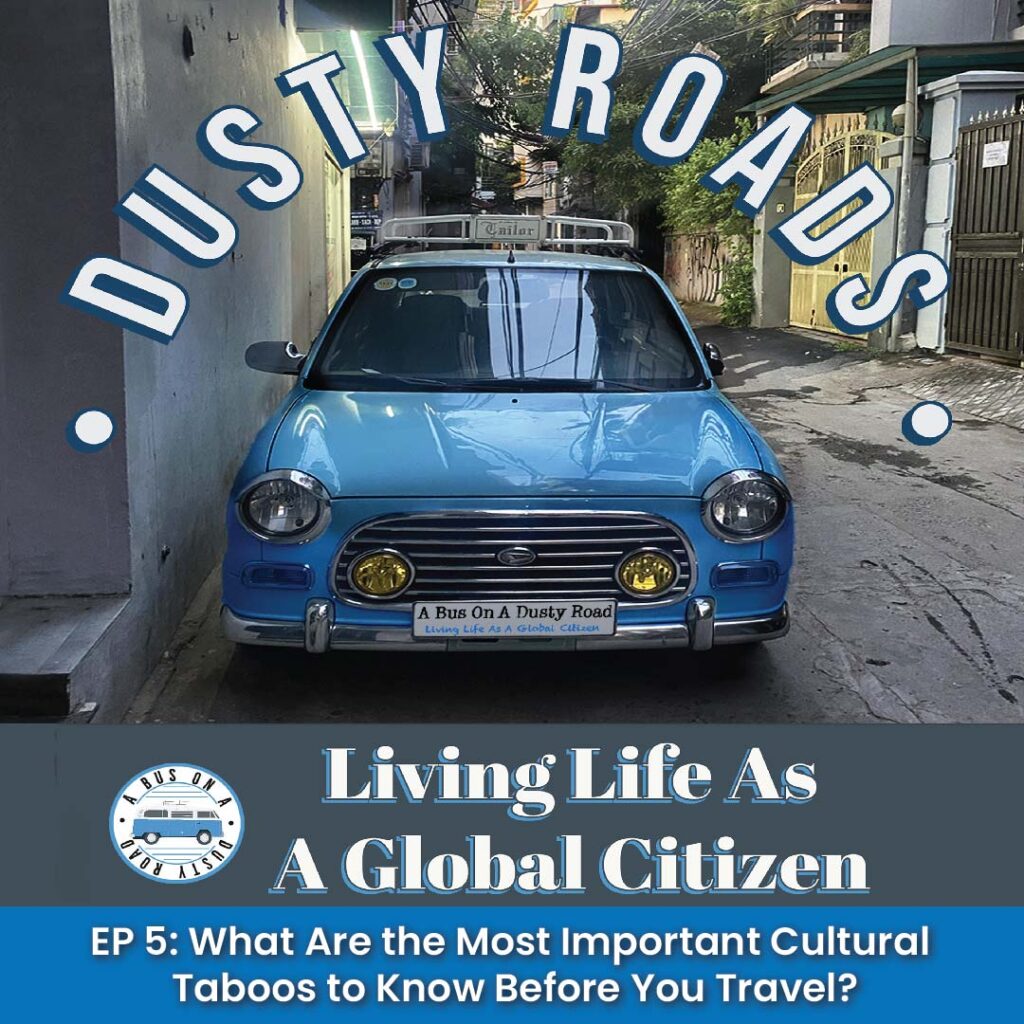Traveling to foreign countries offers a unique opportunity to explore new cultures, cuisines, and landscapes. However, each destination has its customs, traditions, and taboos—unspoken rules that dictate polite behavior.
What might be acceptable or even encouraged in one culture could be offensive or inappropriate in another. For travelers, understanding and respecting these nuances is key to avoiding misunderstandings and ensuring a positive experience for yourself and the people you meet.
Table of Contents
- Understanding Cultural Taboos
- Regional Insights on Cultural Taboos
- Practical Travel Etiquette Tips
- Why Respecting Cultural Differences Matters
- Related Questions
In this guide, we’ll delve into cultural taboos from various regions, provide practical tips for navigating them, and explore why respecting these differences matters. Whether visiting bustling cities in Asia, rural villages in Africa, or historic landmarks in Europe, this comprehensive guide will prepare you to travel with cultural sensitivity.
Understanding Cultural Taboos
Cultural taboos stem from deeply rooted beliefs and historical contexts that vary widely from one country to another. They often involve religion, social hierarchies, historical events, or community values.
Taboos dictate what is considered polite, respectful, or sacred. Ignoring these practices can unintentionally lead to offense, even if no harm was meant.
For example:
- In many Asian cultures, hierarchy is significant, and failing to show respect to elders can be seen as rude.
- In Islamic cultures, modest dress and behavior are deeply tied to religious values, making immodesty or public displays of affection taboo.
Understanding cultural taboos requires more than memorizing lists—it demands empathy, curiosity, and the willingness to adapt. This understanding enriches your travel experience by allowing you to connect authentically with the people and traditions of your destination.
Regional Insights on Cultural Taboos
We live in a world enriched by many diverse cultures with unique customs and traditions. Below, we explore some of the significant cultural taboos from around the globe.
While this list highlights key examples, it is by no means exhaustive. Before embarking on your journey, it’s essential to research the specific cultural taboos of your destination to ensure respectful and mindful travel.
Asia: A Continent of Deep Traditions
Asia is vast, with diverse cultures and traditions. Many taboos are rooted in religious beliefs like Buddhism, Hinduism, and Islam.

- Thailand: The head is considered the most sacred part of the body, globalizing the spirit. Touching someone’s head, even a child’s, is a grave sign of disrespect. Feet, on the other hand, are seen as the dirtiest and least sacred. Never point your feet at people or religious icons, and avoid stepping over anything sacred or essential, such as books or offerings at temples.

- Japan: Social etiquette in Japan emphasizes harmony and respect. Bowing is a customary greeting, and its depth varies depending on the social rank of the person you’re greeting. Tipping is unnecessary and can be offensive, implying the person needs extra compensation for doing their job. Public manners are strictly observed, like refraining from loud conversations or eating on public transport.

- India: In Hindu culture, cows are sacred animals. Eating beef or making light of this belief can deeply offend locals. Additionally, showing the soles of your feet or touching someone with your left hand (considered unclean) should be avoided.
Middle East: Honor and Modesty
In the Middle East, cultural taboos are often intertwined with Islamic teachings.

- Saudi Arabia: Strict laws govern public behavior. Public displays of affection, such as holding hands or kissing, are considered inappropriate and can lead to legal consequences. Women should dress modestly, covering their shoulders and knees, and it’s customary for men and women who are not family to avoid physical contact.

- United Arab Emirates: While Dubai and Abu Dhabi are more cosmopolitan, traditional values remain. For example, taking photos of locals without their permission is taboo, especially for women. The left hand is also considered impure, so it should not be used for eating or passing objects.
Europe: Subtle but Important Etiquette
While Europe might seem less formal, cultural taboos persist and vary by country.

- Italy: Food culture is sacred. Never ask for ketchup with pasta or cheese on seafood dishes, as these requests might offend culinary traditions. Also, avoid ordering a cappuccino after a meal; Italians believe coffee with milk is a breakfast drink.

- Germany: History plays a vital role in German taboos. Jokes or comments about World War II, Nazism, or making Nazi gestures are not only offensive but also illegal. On a lighter note, punctuality is critical—being late, even by a few minutes, can be considered disrespectful.
Africa: Respect for Elders and Community
Africa’s diverse cultures emphasize community and respect for elders.

- South Africa: Personal space and body language matter. Avoid pointing directly at someone with your index finger; use an open palm when gesturing. Greetings are an essential social ritual, so greeting each person in a group is polite.

- Kenya: Elders hold a high status; greeting them warm and respectful is crucial. When shaking hands, allow the elder to initiate and maintain a firm, respectful grip.
South America: Warmth and Informality
South America’s cultures are warm and welcoming, but they come with their own set of taboos.

- Brazil: The “OK” hand gesture, formed by making a circle with your thumb and index finger, is considered vulgar. Instead, use a thumbs-up or a simple nod for agreement.

- Argentina: Punctuality at social gatherings is rare; arriving on time can be perceived as rushing the host. However, punctuality is expected in professional settings.
North America: Emphasis on Individuality
North America values individualism but has its own social rules.

- United States: Tipping is an integral part of the service industry. Failing to tip adequately (usually 15-20%) is rude. Avoid topics like personal income, religion, or politics in casual conversations unless you know your audience well.

- Canada: While Canadians are known for their politeness, don’t confuse French Canadians with being “French.” They have a distinct identity, and respect for their culture is vital, particularly in Quebec.
Practical Travel Etiquette Tips
Before traveling to any destination, it’s essential to research the appropriate etiquette to ensure you respect local customs and traditions. Here are some helpful suggestions to guide your research:
Research Before You Go
Spend time understanding your destination’s customs. A simple internet search or guidebook can provide valuable insights into the dos and don’ts. Apps like Google Translate or Duolingo can help with language basics, making it easier to connect with locals.
Dress Appropriately
Clothing can send strong signals. In conservative regions, wearing revealing clothes can be disrespectful. Even in hot climates, modesty may be expected in certain public spaces or religious sites.
Mind Your Body Language
Gestures that are harmless in one country may carry negative meanings elsewhere. For example, the “thumbs-up” is positive in most cultures but offensive in parts of the Middle East. Always be conscious of how you position your hands, feet, and body.
Learn Key Phrases
Learning basic greetings and polite expressions in the local language demonstrates respect and effort. Phrases like “hello,” “thank you,” and “excuse me” can go a long way in creating goodwill.
When in Doubt, Observe
If you’re uncertain how to act in a new setting, observe how locals behave. Their actions will provide cues on what is appropriate.
Why Respecting Cultural Differences Matters
Respecting cultural taboos isn’t just about avoiding offense; it’s about embracing the richness of diversity.
When you take the time to learn and adhere to local customs, you show appreciation for the culture, build meaningful connections, and leave a positive impression as a traveler. Honoring these practices contributes to a global culture of mutual respect and understanding.
Cultural taboos and customs are more than quirks—they reflect a community’s history, beliefs, and values. As travelers, we are responsible for approaching each destination with respect, curiosity, and adaptability.
By being mindful of taboos and embracing travel etiquette, we can create deeper connections, richer experiences, and a better understanding of the world.
Listen To Our Podcast About
What Are the Most Important Cultural Taboos to Know Before You Travel?
Below or By clicking here.

At A Bus On A Dusty Road, we talk about travel, life, and ex-pat living. We are all about “Living Life As A Global Citizen.” We explore social, cultural, and economic issues and travel.
We would love to have you be part of our community. Sign up for our newsletter to keep up-to-date by clicking here. If you have any questions, you can contact me, Anita, by clicking here.
Listen to our Podcast called Dusty Roads. You can find it on all major podcast platforms. Try out listening to one of our podcasts by clicking here.
Subscribe to our A Bus On A Dusty Road YouTube Channel with great videos and information by clicking here.
Related Questions
Is Swedish Cooking Bland?
Swedes have always embraced foods from other cultures and places. Like most parts of the world, the Swedes used local ingredients to spice up and flavor their food. Swedish food is a northern European food, so if you know how and what to eat, it is rich and full of unique flavors.
You can read our blog on Is Swedish Cooking Bland? by clicking here to learn more.
Differences Between The Danish, Swedish, and Norwegian Vikings
The Danish Vikings were the most political of the three groups of Vikings, as they had a noble family behind them and their expeditions. The Norwegians Vikings were the most violent and traveled the furthest. The Swedish Vikings went through Europe, not westward like the Danish and Norweigan Vikings.
You can discover more by reading our blog, Differences Between The Danish, Swedish, and Norwegian Vikings, by clicking here.
All About Kubb – The Outdoor Swedish Ancient Viking Game
Legend has it that Kubb was an old Viking game, but this rumor has never been confirmed. Kubb is an ancient Nordic outdoor lawn game that continues to take Europe, the United States, and even the world by storm. Kubb is a game that almost anyone of any age can play, but to play it well requires strategy and skill.
By clicking here, you can discover more by reading our blog, All About Kubb – The Outdoor Swedish Ancient Viking Game.

